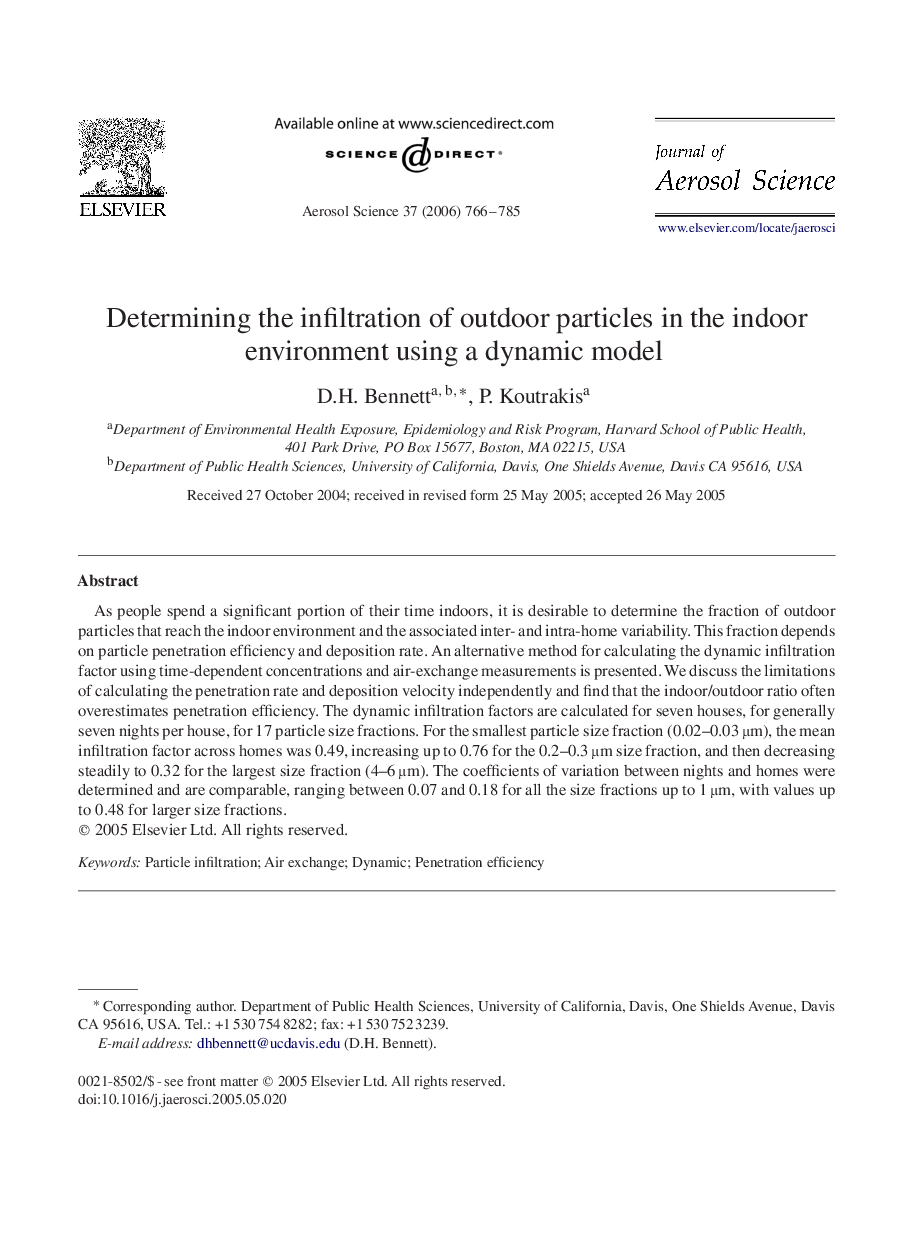| Article ID | Journal | Published Year | Pages | File Type |
|---|---|---|---|---|
| 4453333 | Journal of Aerosol Science | 2006 | 20 Pages |
As people spend a significant portion of their time indoors, it is desirable to determine the fraction of outdoor particles that reach the indoor environment and the associated inter- and intra-home variability. This fraction depends on particle penetration efficiency and deposition rate. An alternative method for calculating the dynamic infiltration factor using time-dependent concentrations and air-exchange measurements is presented. We discuss the limitations of calculating the penetration rate and deposition velocity independently and find that the indoor/outdoor ratio often overestimates penetration efficiency. The dynamic infiltration factors are calculated for seven houses, for generally seven nights per house, for 17 particle size fractions. For the smallest particle size fraction (0.02–0.03 μμm), the mean infiltration factor across homes was 0.49, increasing up to 0.76 for the 0.2–0.3 μμm size fraction, and then decreasing steadily to 0.32 for the largest size fraction (4–6 μμm). The coefficients of variation between nights and homes were determined and are comparable, ranging between 0.07 and 0.18 for all the size fractions up to 1 μμm, with values up to 0.48 for larger size fractions.
